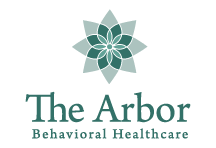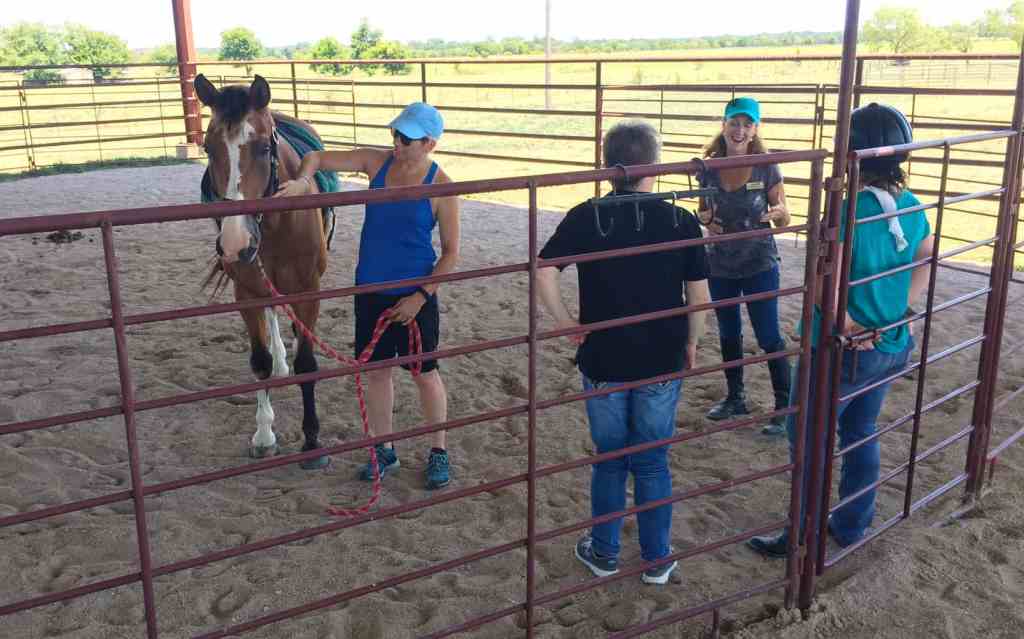Perhaps you have heard of equine therapy or horse therapy and wondered how horses could offer a therapeutic benefit to people. You may be surprised at the answer. Equine therapy is an evidence-based treatment modality.
This means it is well-researched, and a library of literature supports its use in helping to heal humans suffering from a variety of physical, emotional, and psychological disorders.
What is equine therapy?
Equine-assisted therapy (EAT), is an experiential treatment method used to foster emotional, physical, occupational, or communications growth in people suffering from a wide range of disorders. A variety of horse therapy programs exist to serve different needs.
Equine-assisted psychotherapy is designed to serve those with mental or cognitive issues such as ADD, substance abuse addiction, anxiety, autism, dementia, depression, bipolar disorder, traumatic brain injuries, genetic disorders, behavioral issues, PTSD, and many other disorders. Other equine therapy models, such as therapeutic horseback riding and hippotherapy are designed for those with physical disabilities such as cerebral palsy or developmental delays.
Types of equine therapy programs
There are four primary types of equine therapy.
Equine-Assisted Psychotherapy or Equine-Facilitated Psychotherapy
The first, and the one we use here at The Arbor, is Equine-Assisted Psychotherapy, also known as Equine-Facilitated Psychotherapy (EFP). EFP is used with people who are dealing with emotional, mental health, trauma, PTSD, or addiction issues. EFP requires a trained and licensed psychotherapist. The psychotherapist may work side-by-side with an equine specialist. The horse and human are equal partners who form a relationship based on mutual respect.
Hippotherapy
Did you know that hippos derives from the Greek word for horse? Hippotherapy is also known as Equine-Assisted Physical Therapy. Hippotherapy facilitates neuromotor, sensory, and cognitive functions in the brain. It is a form of physical, occupational, and speech therapy used with individuals who have neuromuscular disorders. It assists in the development of better balance, coordination, and postural control.
Hippotherapy sessions are facilitated by a licensed physical or occupational therapist, or a speech-language pathologist and a certified equine specialist. An assessment is done and a treatment plan developed that is specific to the goals for the patient.
Equine-Facilitated Learning (EFL)
EFL encompasses a wide variety of activities that include horses for either emotional or physical growth. This can range from confidence building to physical skill mastery, team building, and cooperation. Those who lead EFL sessions do not have to be licensed or credentialed. Sessions may occur on or off the horse. It is important to understand the training and background of the facilitator, as well as the intended goals for sessions.
Therapeutic Riding (TR)
TR is has a broad range of uses. Therapeutic riding sessions are designed to positively impact the emotional, physical, cognitive, and social well-being of the rider. TR has been used for a long time for children with disabilities but is also now used successfully to treat children with sensory integration disorders, autism, or who are dealing with trauma.
It improves balance, flexibility, and muscle control. It can build confidence for riders. It’s also just plain fun. Therapeutic riding is an equine-assisted activity and not a true form of therapy.
Is this just riding horses?
No. Equine therapy programs involve more than just horseback riding. In some cases, the client might not even touch a horse. A variety of interactions with horses fall into the realm of equine facilitated healing. As a wide variety of treatment goals exist, the activities and interactions with the animal are based on the goals of the therapy and the needs of the client.
Benefits of equine-assisted therapy
A significant body of evidence has shown that animal therapy offers a variety of benefits that foster psychological, mental or emotional growth. As many different forms of therapy include horses, the benefits vary based on the intent of the program.
Communication
Horses are sensitive to non-verbal communication and respond accordingly. This is especially helpful for those suffering from anxiety. The non-verbal communication between the horse and handler is effective even for those who may have speech or language barriers.
Trust
Horses are huge! For the individual, learning to trust such a large animal aids in building or restoring trust for those who have a history of trauma or abuse. Horses are unbiased and non-judgemental but react to the emotions and behaviors of the human.
Impulse control
Horses respond to non-verbal cues, thus communicating with a horse calmly and effectively requires emotional awareness and regulation, and self-control. EAT has been demonstrated to help those with mental disorders or developmental delays reduce aggressiveness and agitation. It also helps patients to learn how to establish healthier communication techniques that can be applied to their human relationships.
Relationship boundaries
The relationship between the rider and the horse requires mutual respect. People with a history of abusive or controlling relationships learn to manage relationship and behavioral boundaries by working with the horse. They later use these skills to better manage their human relationships.
Relationship skills
There is a multitude of reasons a person may have a hard time establishing and keeping healthy relationships. Mutually respectful boundaries are a start, but a relationship also requires trust and communications. Horses are non-judgemental. However, much like humans, horses do not offer unconditional acceptance.
They respond authentically to their human “partner” and can sense when a person is trying to control them. A horse will comply out of fear but this isn’t a healthy connection. Successful communication with humans is also largely non-verbal. In fact, 55% of communication is body language, and 38% is tone.
Thus only about 7% of how people communicate is done with words. Horses respond to both verbal and non-verbal communication. The horse then chooses to either comply, resist, ignore or connect with the person.
Just as the horse can sense when a person is trying to dominate or control them, they can also sense when a human wants a truly heartfelt connection. As the human learns how to form a sincere emotional bond with the horse, these skills can translate into healthier human connections.
Stress reduction
Getting outdoors and playing, participating in activities that include equine riding and games, reduce stress and bring fun and joy to people. This can help clients release over-controlled emotions and gain some spontaneity. Riding a horse in the fresh air, experiencing the beauty of nature, can be a spiritual and relaxing activity.
Equine-assisted psychotherapy in the United States
EAT has become a popular therapy modality for treatment of emotional, behavioral, addiction, and mental health disorders here in the U.S. There are two primary approaches. One popular approach uses traditional horsemanship principles.
These entail activities – whether individual or group – whose focus is “the task at hand” which leads to the control or manipulation of the animal toward specific outcomes. These activities may include grooming, leading, riding, or other activities based on the therapeutic goals in the treatment plan.
These activities are used to build confidence, teamwork, leadership, and communication, along with regulating impulse control, anger management, and developing healthy coping skills. This approach places the emphasis of therapy on the benefits to the client.
Natural Lifemanship – a newer approach
Another approach that is growing in popularity – and the one supported and practiced by The Arbor Equine Assisted Therapy Program – is to view the relationship between client and horse as a true partnership – not one that is performance -driven but rather one based on building a connected, mutually beneficial relationship with the animal. This prpgram is facilitated by Sacred Presence.
While this model also promotes confidence, teamwork, communication, impulse control, anger management, and healthy coping skills, it also takes into consideration that the most important element of the relationship between human and horse is the relationship itself rather than on “one-sided” outcomes.
This shifts the focus from the “task at hand” to the development of a healthy, trusting relationship. The Natural Lifemanship approach is facilitated by a team that includes a mental health professional and a certified equine specialist that work with the client and horses. The horses work “at will” and are provided the opportunity to authentically respond to their human partner.
The science behind Natural Lifemanship
Natural Lifemanship (NL) is a new standard of EAT that uses a trauma-informed approach. This type of therapy is “designed to address the consequences of trauma in the individual and to facilitate healing.” This approach is based upon research done on how trauma changes the brain and helps the brain heal.
Researchers have been able to measure physical changes in blood flow in the brain. This allows them to watch the changes in how the brain functions during experiences. This allowed for the development of a program that allows one to respond to challenges in ways that benefit the client and build relationships between the horse and patient.
Mental health professionals can use Natural Lifemanship in two ways. One is to use it along with other therapy modalities such as play therapy, cognitive behavioral therapy, EMDR, or art therapy. The second way is to use it in its original form, known as Trauma-Focused Equine-Assisted Psychotherapy (TF-EAP). This model is unique to NL.
What is the difference between traditional EFP and Natural Lifemanship?
In addition to the trauma-induced focus of Natural Lifemanship, the two treatment modalities differ in a number of ways. Traditionally, the horse in the therapeutic partnership has been viewed as a mirror of the human half of the partnership. NL views the role of the horse differently.
Clients undergoing Natural Lifemanship therapy form a real relationship with the horse. The goal is not human dominance of the horse, but one that is more mutually rewarding. The human-horse partnership develops because both partners “choose to do the right thing for the other because it is the right thing to do.” It is a relationship built on mutual respect. Natural Lifemanship includes activities that are both on and off the horse. Traditional EFP sessions do not include any on-horse activity.
The Arbor has elected to offer the Natural Lifemanship Equine-Assisted Psychotherapy approach to help heal those with addiction or co-occurring mental health and addiction disorders. If you’d like to know more about addiction treatment programs, please give us a call. References https://naturallifemanship.com/about/trauma-focused/ http://www.eagala.org/ https://www.researchgate.net/publication/228793576_Efficacy_of_equine_therapy_Mounting_evidence


